Latest global cancer statistics: 10 million people will die of cancer this year
Recently, the world's largest circulation academic journal, one of the most influential journals, A Cancer Journal for Clinicians, published an article entitled "Global Cancer Statistics 2018: GLOBOCAN Estimates of Incidence and Mortality Worldwide for 36 Cancers in The 185 Countries article, the latest global cancer statistical analysis in 2018, has attracted widespread attention as soon as it was published. It is understood that the statistical analysis covers 36 cancers in 185 countries, mainly analyzing 2018 The incidence and mortality of cancer, and detailed description of the incidence of cancer in various regions.
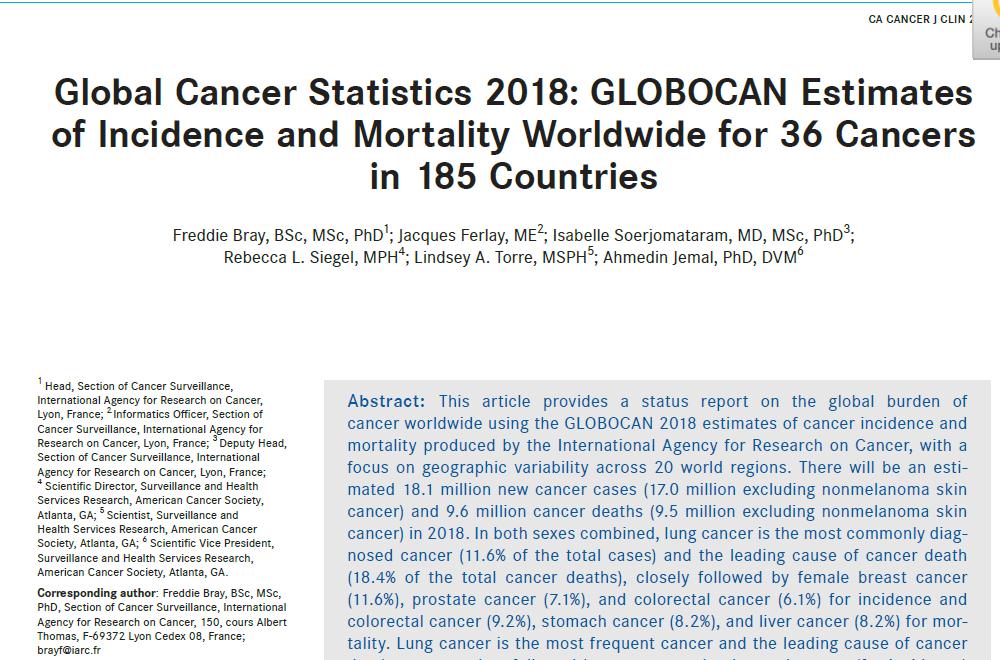
More than 18 million people have cancer
According to statistics, there are an estimated 18.19 million new cancer cases and 9.6 million cancer deaths worldwide by 2018. The cancer prevalence rate in China is above the upper-middle level in the world. About 10,000 people in China diagnose cancer every day. On average, 7 people get cancer every minute.
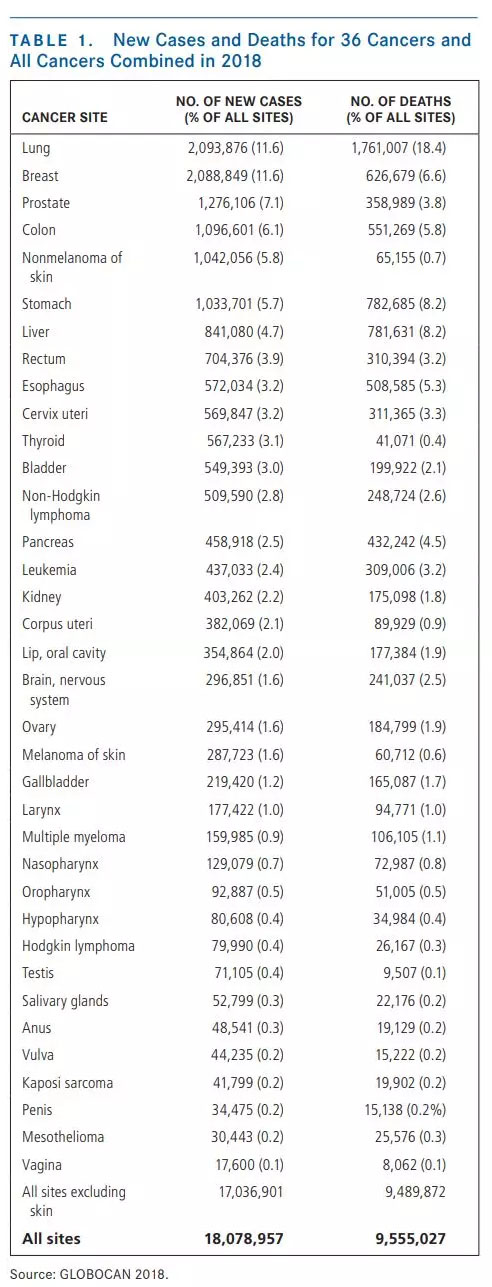
New cases and deaths of various types of cancer

China's cancer morbidity and mortality are compared to world levels
Lung cancer remains the world's highest incidence of cancer and death rate
At the same time, the researchers analyzed the overall incidence and mortality of cancer in the total population. The latest data show that the global cancer population (the two genders) has the latest incidence of cancer: the first is lung cancer, accounting for cancer. 11.6% of the total population; the second is female breast cancer, accounting for 11.6% of the total cancer population, the third and fourth are prostate cancer and colorectal cancer, respectively, accounting for the total incidence of cancer 7.1% and 5.7% of the population.
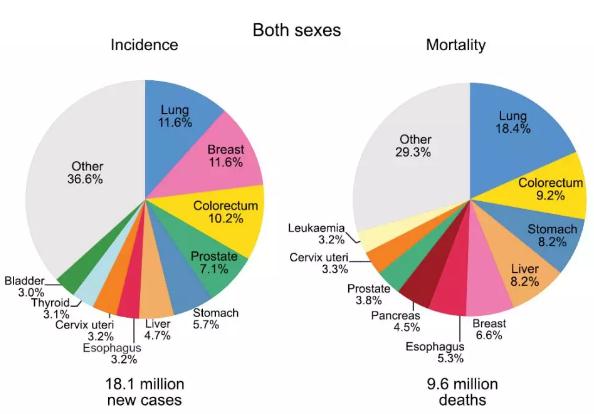
The fatal rate of cancer in the global population is ranked as follows: the first is still lung cancer, accounting for 18.4% of the total cancer population (expected to cause 1.8 million deaths); the second is colorectal cancer, accounting for The total cancer population is 9.2%, followed by gastric cancer and liver cancer, which account for 8.2% of the total cancer population.
Lung cancer is the "male killer" and breast cancer is the "female first killer"
The gender difference in cancer release and death is also one of the focuses of this statistical analysis. The final analysis showed that lung cancer is the most common and fatal cancer in men, followed by prostate and liver cancer. For women, breast cancer is undoubtedly the number one female “killer†(on a global scale, there will be approximately 2.1 million newly diagnosed female breast cancer cases in 2018), and globally diagnosed female cancer cases worldwide. About one-quarter of breast cancer is the most common cancer in women in 154 of the 185 countries covered by this study. If found early, breast cancer may be a controllable disease, but it is still the number one cancer causing female death, followed by lung cancer, colorectal cancer and cervical cancer.
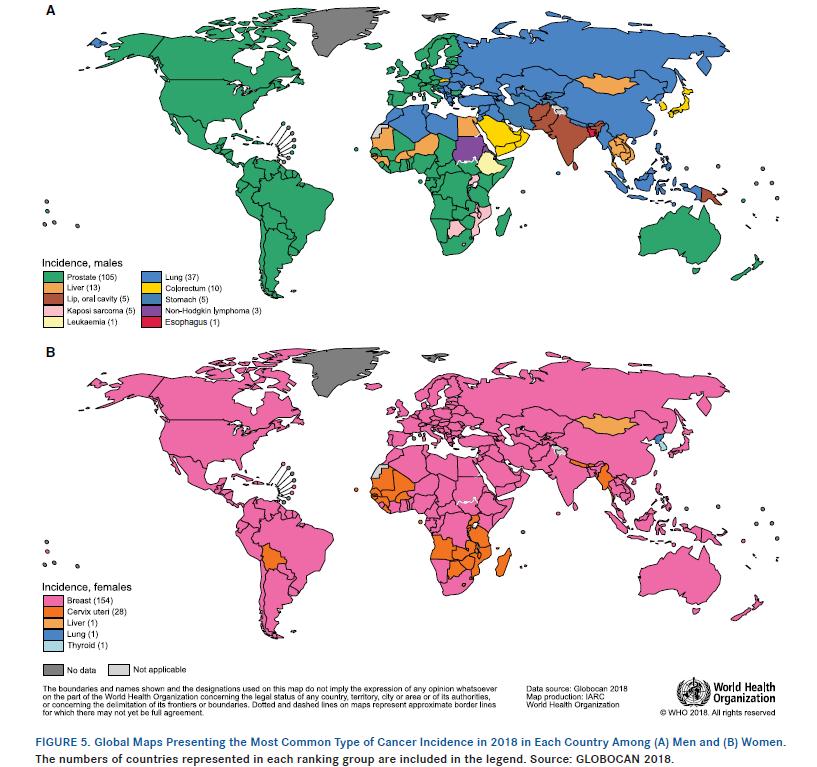
The most common cancer incidence among men and women worldwide
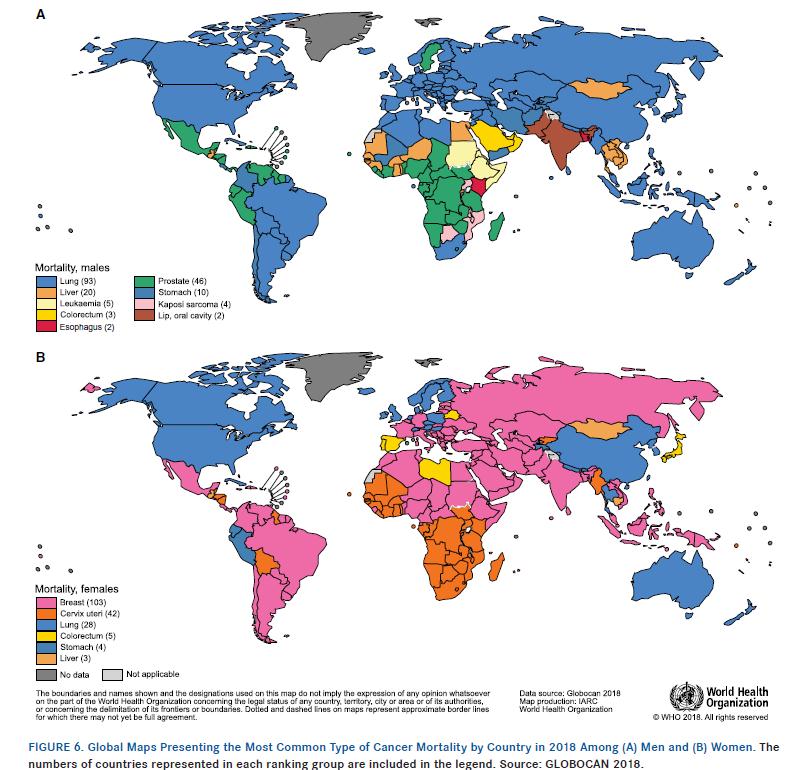
The most common cancer mortality rate among men and women worldwide
In terms of the overall incidence of cancer in both sexes, men are higher than women (age rate (ASR): 218.6/100,000 vs 182.6/100,000). Similarly, men’s cancer mortality is higher than Female (122.7/100,000 vs 83.1/100,000).
Older, cancer incidence and mortality are greater
From the age of cancer morbidity and mortality, according to global survey data, the cumulative risk of cancer before the age of 75 is 21.4%, and the risk of dying from cancer is 17.7%. One out of five men, or one in six women, develops cancer; one in eight men, or one in 10 women, will die of cancer.
It has also been mentioned in the latest cancer statistics report released before China that the incidence of malignant tumors in the 40s and older has risen sharply and reached a peak at 80 years old.
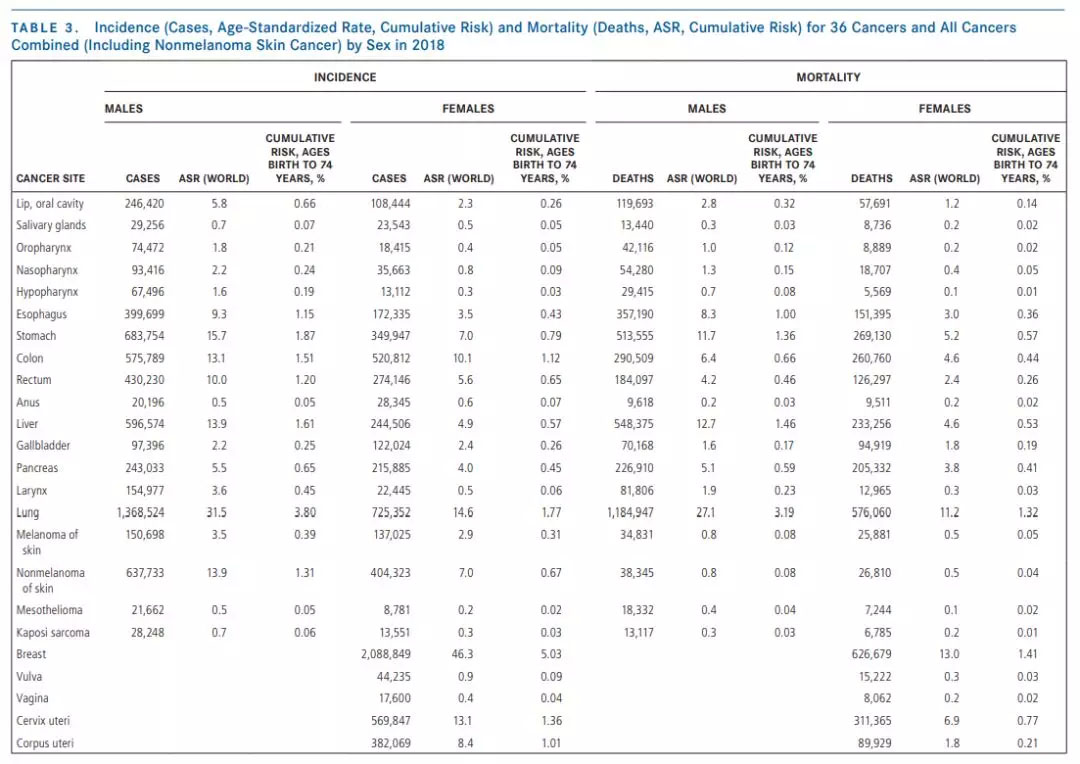
Regional differences are obvious, and Asia is a “hardest hitâ€
It is worth mentioning that one of the most important ideas of the above research is to include the degree of economic development in various regions and related social lifestyles. Due to the uneven distribution of factors such as global economic technology, the types, incidence, type of death and death of cancer in various regions of the country are unevenly distributed. According to the epidemiological analysis of the latest cancer, the incidence and mortality of cancer are closely related to the level of socioeconomic development.
Of the 18.1 million new cancer cases, Asia accounts for nearly half. Of course, this is mainly due to the fact that nearly 60% of the population live in Asia. Of the 9.6 million cancer deaths, Asia accounts for nearly 70%.
In addition, 9.5 million of the 18.1 million new cancer cases are male, and Asian men account for nearly half of the total number of cases; the mortality rate is 60%. There are 8.6 million new cancer patients in women, with 47.5% of Asian women and half of the mortality rate.
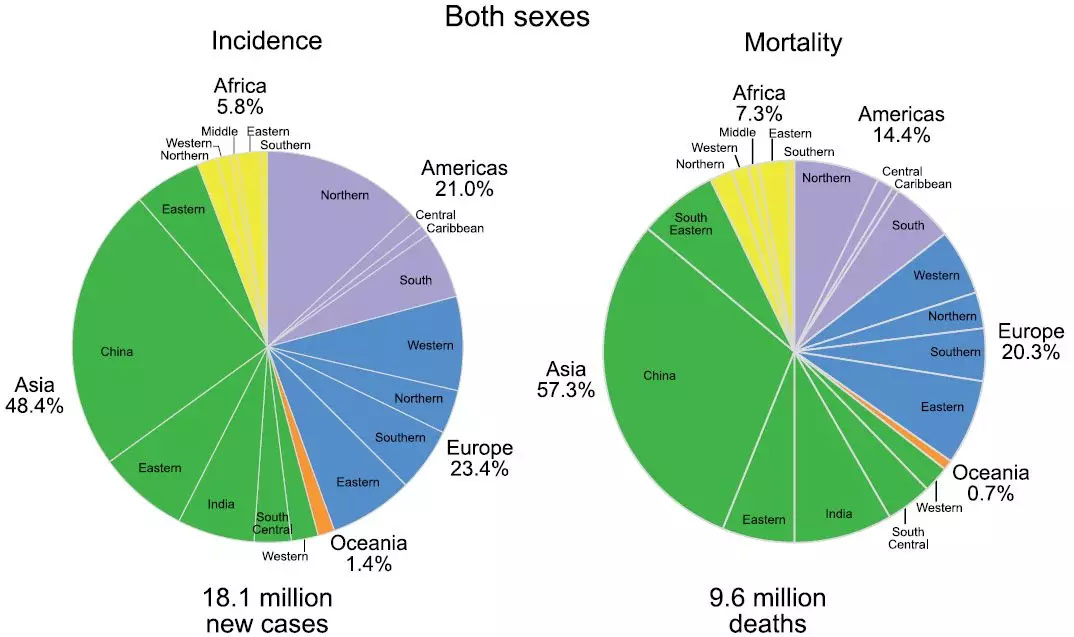
The factors that cause cancer are changing
Global cancer morbidity and mortality are rapidly increasing, and research has shown that there are many factors contributing to the increasing global cancer burden, including population growth and aging, as well as changes in certain cancer causes associated with social and economic development. This problem is particularly acute in fast-growing economies, such as the fact that certain causes of cancer are shifting from being associated with poverty and infection to lifestyle-related.
Studies in high-income countries have shown that by eliminating or reducing exposure to known lifestyle and environmental risk factors, one-third to two-fifths of new cancer cases can be avoided. Although several interventions have proven to be an effective means of cancer prevention, international efforts to promote and implement primary prevention remain lacking in motivation, and policy makers remain unaware of the extent of progress and the benefits of prevention, such as most Low-income and middle-income countries do not have high-quality cancer registration data, which is the basis for planning and implementing evidence-based cancer control programs.
Centrifuge Products,High-Speed Centrifuge,Refrigerated Centrifuge For Lab,Medical Low Speed Centrifuge
Guangdong Widinlsa International Co.Ltd , https://www.widinlsamachine.com